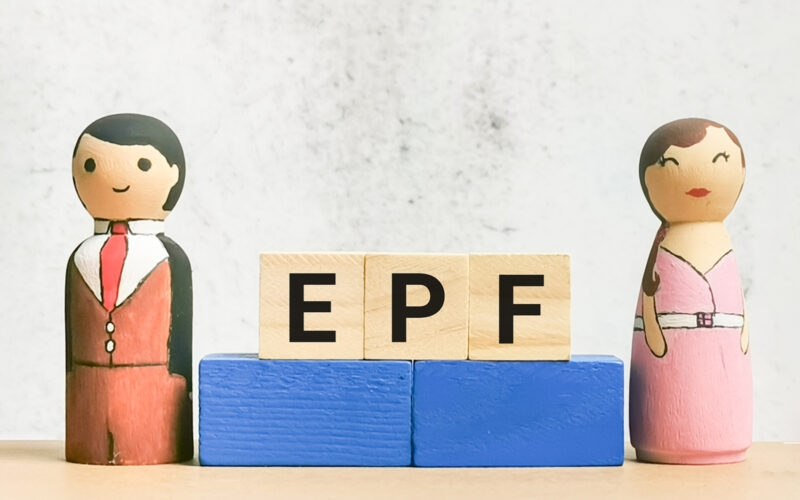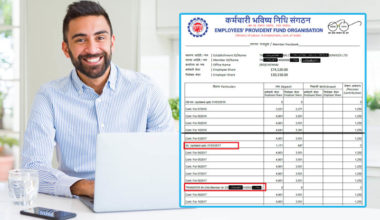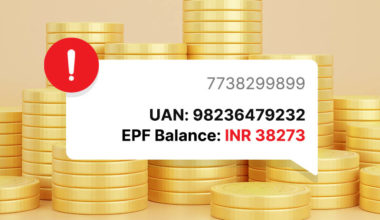The EPF scheme is super important for employees in different jobs. It helps them save money for retirement and also gives them financial help if something unexpected happens. In this guide, we’ll talk about EPF contributions in detail. We’ll cover the basics, like how much money you put in, how it’s calculated, and why this scheme is so important for making sure you have a good financial future.
Table of Contents Show
What is EPF?
EPF stands for Employees’ Provident Fund, which is a savings scheme created for employees in India. It is a mandatory contribution scheme where both the employer and employee make regular monthly contributions. The funds accumulated in the EPF account are meant to provide financial security and stability for employees after retirement. This scheme also offers partial withdrawals for specific purposes like buying a house, medical emergencies, or education. The EPF is managed by the Employees’ Provident Fund Organization (EPFO), overseen by the government to ensure employees’ financial well-being.
Eligibility for EPF Contribution
Employees Provident Fund (EPF) is a scheme in India that provides various benefits to employees. To be eligible for the EPF scheme, certain criteria must be met:
- All states in India are covered under the EPF scheme, allowing employees from any state to benefit from it.
- It is mandatory for salaried employees earning up to ₹15,000 to have an EPF account.
- Employees earning more than ₹15,000 can also register for an EPF account, but it requires approval from the Assistant PF Commissioner.
- Organizations with a workforce of 20 or more employees are required to register for the EPF scheme.
- Organizations with less than twenty employees have the option to voluntarily join the EPF scheme.
Types of EPF Forms
There are several types of EPF forms used for various purposes related to the Employees’ Provident Fund (EPF) in India. Here are some commonly used EPF forms along with their meanings:
- Form 19: This form is used for the final settlement of an EPF account when an employee leaves their job, retires, or becomes incapacitated. It is used to claim the EPF balance, including the employee’s contribution, employer’s contribution, and any applicable interest.
- Form 31: This form is used for partial withdrawals from the EPF account before the employee’s retirement. It can be used for various purposes such as medical emergencies, home loan repayments, education, marriage, or construction of a house.
- Form 13: This form is used for transferring the EPF balance from one employer to another when an employee changes jobs. It is used to initiate the transfer process and consolidate the EPF balance into a single account.
- Form 20: This form is used to claim the EPF amount in the event of the death of an EPF account holder. It is used by the nominee or legal heir to apply for the settlement of the EPF account.
- Form 11: This form is used for providing declaration and nomination details by new EPF members to their employers. It includes information such as name, address, family details, and nominee details.
These are just a few examples of the EPF forms used for different purposes. It’s important to note that the EPF forms may be revised or updated periodically, and it is advisable to refer to the official EPF portal or consult with the concerned authorities for the latest versions and guidelines related to EPF forms.
Benefits of EPF Contribution
EPF contribution provides a number of benefits to employees, including:
- Tax Benefits: EPF contribution is tax-free, which means that the money you contribute towards your EPF account is exempt from income tax. This helps you save more money in the long run.
- Long-Term Investment: EPF contribution is a long-term investment that helps you build a retirement corpus over time. The interest earned on your EPF account is compounded annually, which means that your savings will grow over time.
- Withdrawal Flexibility: Partial withdrawals are allowed for specific purposes like housing, medical emergencies, education, etc.
- Transferability: EPF accounts are transferable when changing jobs, ensuring continuity of savings.
- Social Security: EPF serves as a social security net, providing income after retirement for a decent standard of living.
Also Read: What is a Long Term Investment and What Are Its Benefits
EPF Contribution Rules
- Contribution Percentage: Both the employee and employer are required to contribute a fixed percentage of the employee’s salary to the EPF account. The current contribution rate is 12% of the employee’s basic salary plus dearness allowance (DA).
- Salary Threshold: EPF contribution is mandatory for employees with a basic salary plus DA of up to ₹15,000 per month. For employees earning above this threshold, it is optional, subject to approval from the Assistant PF Commissioner.
- Split of Contribution: The employee’s contribution is deducted from their salary, and the employer contributes an equal amount. The entire contribution is deposited into the employee’s EPF account.
How EPF Contribution is Calculated?
The EPF contribution in India is calculated based on the employee’s basic salary plus dearness allowance (DA). The employee contribution is fixed at 12% of the sum of basic salary and DA. The employer also contributes an equal amount of 12% of the employee’s basic salary and DA.
Here’s an example to illustrate the calculation:
Let’s assume an employee’s basic salary is ₹20,000 per month and the DA is ₹5,000 per month.
Employee contribution:
12% of (₹20,000 + ₹5,000) = 12% of ₹25,000 = ₹3,000
Employer contribution:
12% of (₹20,000 + ₹5,000) = 12% of ₹25,000 = ₹3,000
So, in this case, the employee and employer would each contribute ₹3,000 towards the EPF account.
It’s important to note that the EPF contribution is based on the basic salary and DA, and it does not include other allowances or components of the salary. The maximum limit for EPF contribution is currently set at ₹15,000 per month. If the employee’s basic salary and DA exceed this limit, the contribution is calculated based on the limit.
It’s advisable to consult the EPF guidelines and consult with the employer or EPFO for accurate calculations and details regarding EPF contributions.
EPF contribution is an important savings scheme that all employees in India should understand and participate in. By regularly contributing to your EPF account, you are creating a financial safety net for your future. Currently set at 12%, the EPF contribution rate may potentially increase to 14% in the future. However, regardless of the rate, it is crucial to consistently contribute to your EPF account to ensure a secure and comfortable retirement. Make it a priority to stay informed and actively participate in this valuable savings opportunity.
Disclaimer: Nothing on this blog constitutes investment advice, performance data or any recommendation that any security, portfolio of securities, investment product, transaction or investment strategy is suitable for any specific person. You should not use this blog to make financial decisions. We highly recommend you seek professional advice from someone who is authorised to provide investment advice.










